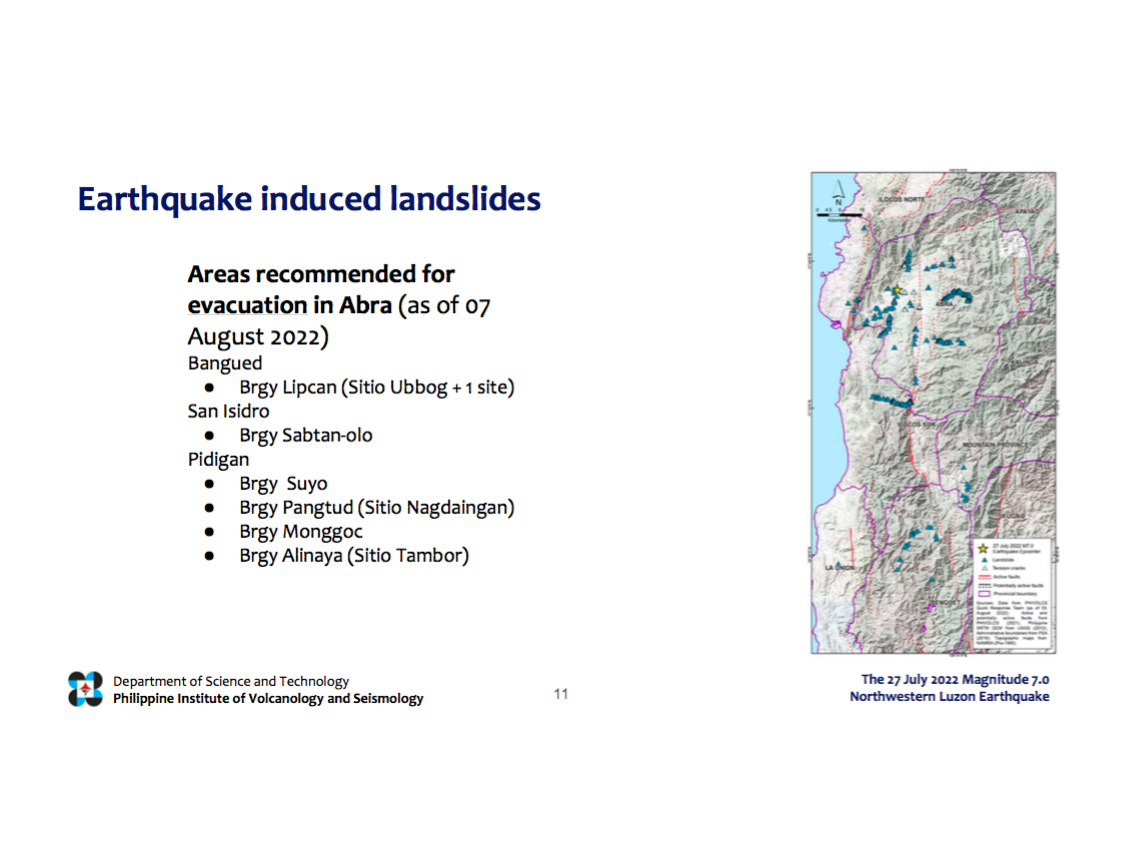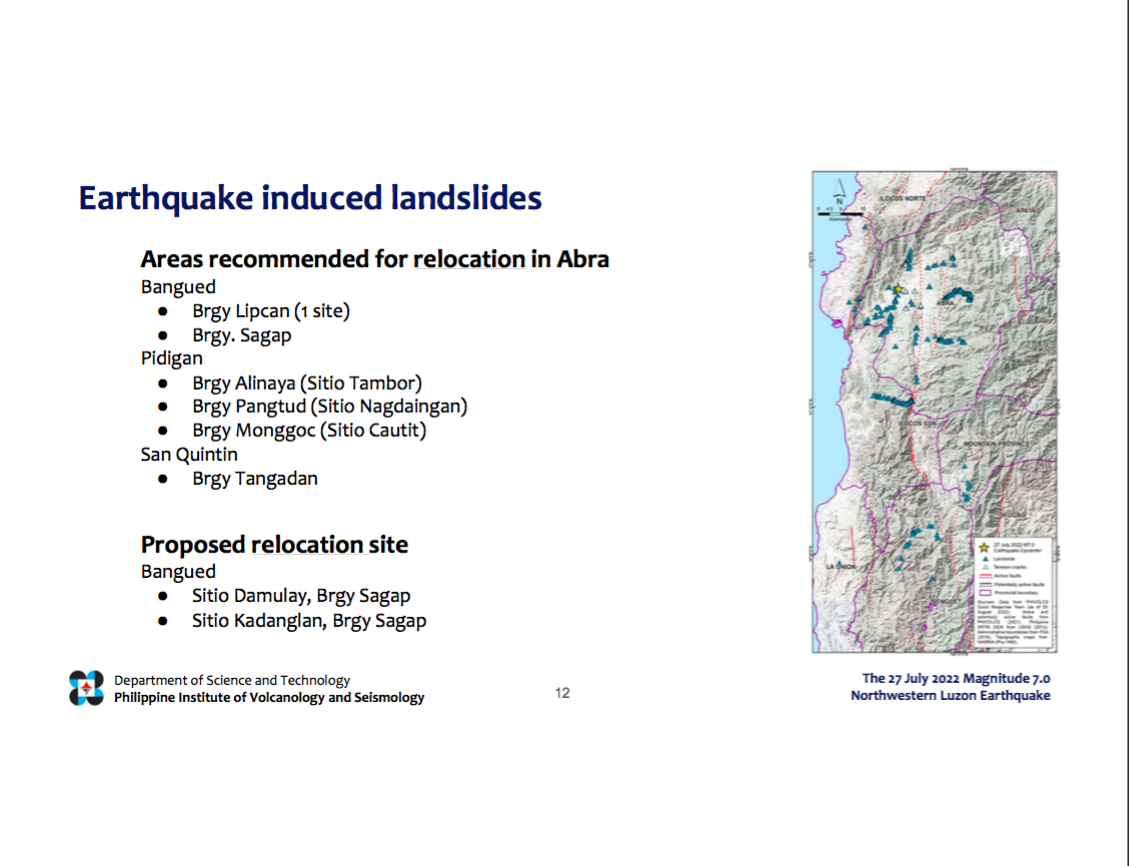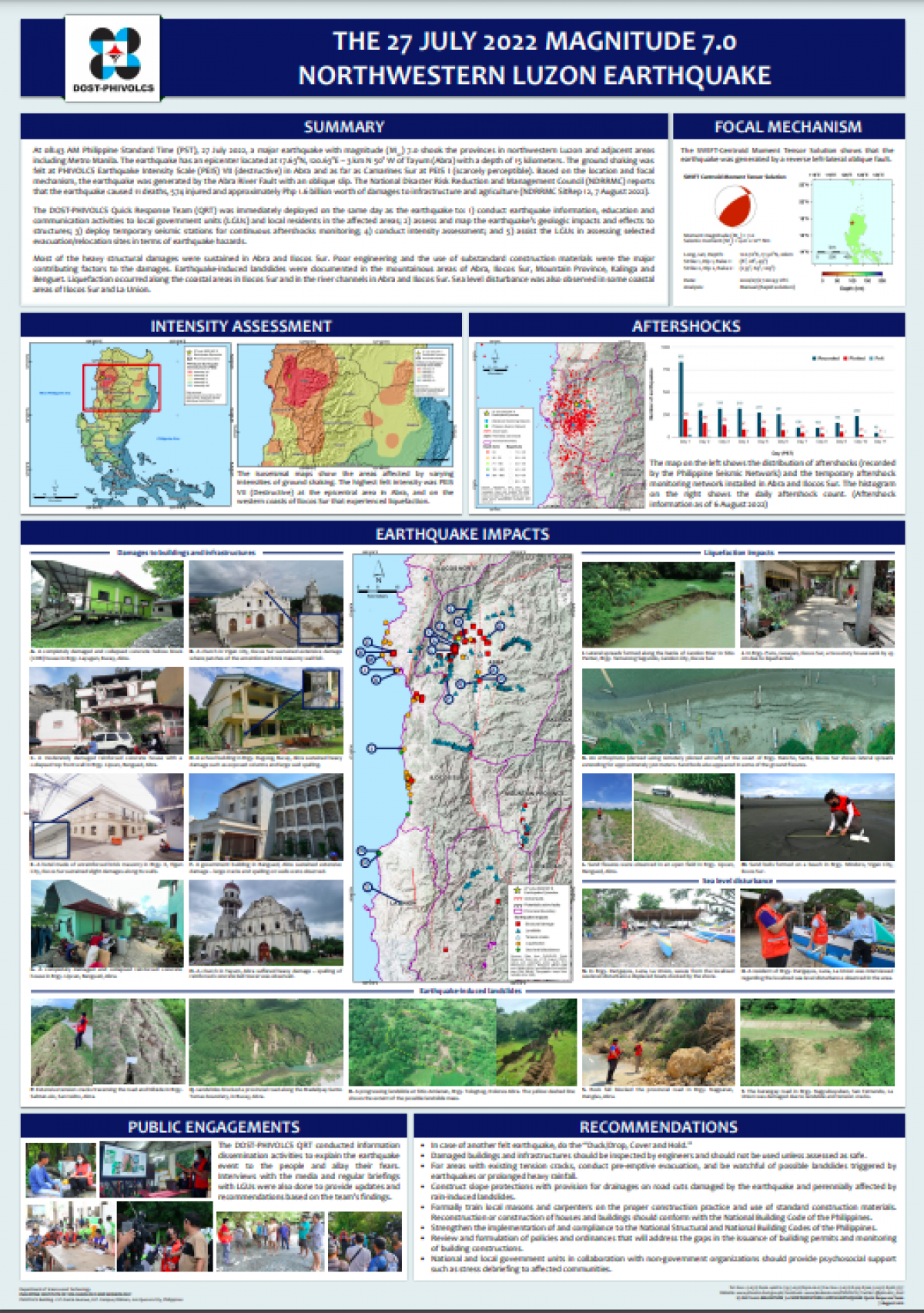BANGUED, Abra (PIA) - - The expertise of the Department of Science and Technology-Philippine Institute of Volcanology and Seismology (DOST-PHIVOLCS) Quick Response Team (QRT) aided some of the local government units in the province in recommending the immediate evacuation and relocation of some communities affected by the July 27 magnitude 7 earthquake that hit the province and the northwestern parts of Luzon.
The team in their 10-day assessment kept the concerned LGUs and stakeholders posted on their daily findings since their deployment in Abra a day after the said major earthquake. Among their findings on the geologic impacts of the earthquake are induced landslides and tension cracks in the mountainous areas and liquefaction in the river channels.
DOST-PHIVOLCS Supervising Science Research Specialist Jeffrey Perez said based on their assessment of the earthquake manifestations, they recommended the evacuation of the communities in sitio Ubbog plus one site in barangay Lipcan in Bangued and barangay Sabtan-olo in San Isidro. Evacuation was likewise recommended in four barangays in the municipality of Pidigan namely Suyo, sitio Nagdaingan in barangay Pangtud, barangay Monggoc, and sitio Tambor in barangay Alinaya.


The team also recommended the relocation of affected communities - one site of barangay Lipcan and barangay Sagap in Bangued, the three barangays affected in Pidigan namely Alinaya (sitio Tambor), Pangtud (sitio Nagdaingan) and Monggoc (sitio Cautit), and also barangay Tangadan in San Quintin. It has also identified possible relocation sites.
Perez noted that people have become conscious of their surroundings such as the case of the community in Sagap, Bangued which reported and documented the tension cracks above the mountain and was later on confirmed by the team.
He bared that earthquake-induced landslides in mountainous areas of 20 towns of the province were recorded.
Moreover, liquefaction was also observed in the towns of Tayum, Bangued, Dolores, Peñarrubia and Bucay which manifested as sand boils, ground fissures, lateral spreads, ground subsidence and localized swelling.
But he allayed fears of residents that considering the magnitude and intensity of the earthquake, there are more structures that are standing.
“Ang nakita namin actually mas maraming bahay ang nakatayo compared sa mga bahay na nasira. With this intensity po, makikita natin na ang nasisirang bahay ay ‘yung mga bahay na substandard ang pagkagawa. ‘Yung mga bahay na mahina yung pagkakagawa ng structures, mahina yung mga materials na ginamit, mukhang may problema sa design,” Perez claimed.
The team also conducted earthquake information dissemination and education about earthquake to LGUs and residents in the affected areas.
The PHIVOLCS has deployed temporary seismic stations for continuous monitoring of aftershocks.
Following their 10-day assessment, the PHIVOLCS team presented their recommendations to Governor Dominic Valera.
For areas with existing tension cracks, conduct pre-emptive evacuation, and be watchful of possible landslides triggered by earthquakes or prolonged heavy rainfall.
Damaged buildings and infrastructures should be inspected by engineers and should not be used unless assessed as safe.
Formal training of local masons and carpenters on the proper construction practice and use of standard construction materials.
Reconstruction or construction of houses and buildings should conform with the National Building Code of the Philippines. Strengthen the implementation of and compliance to the National Structural and National Building Codes of the Philippines, and
Review and formulate policies and ordinances that will address the gaps in the issuance of building permits and monitoring of building constructions. (JDP/SCA-PIA-CAR, Abra)




